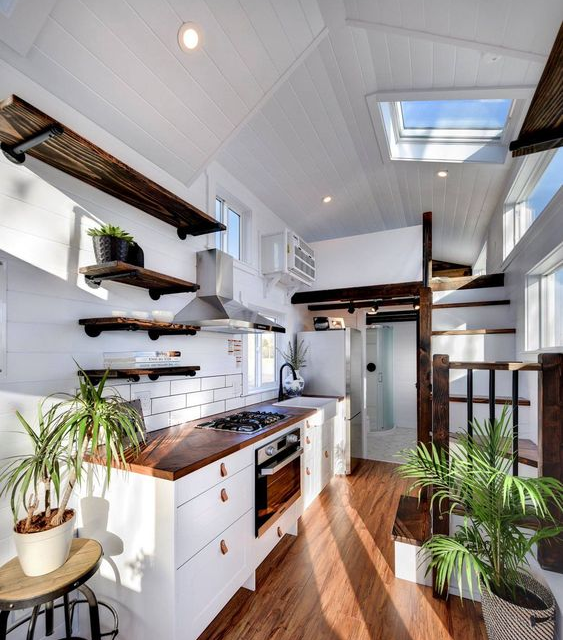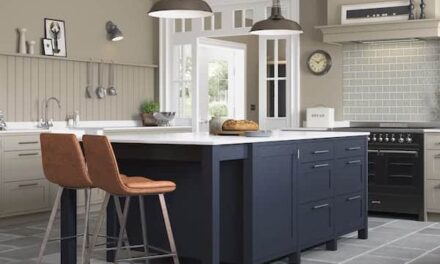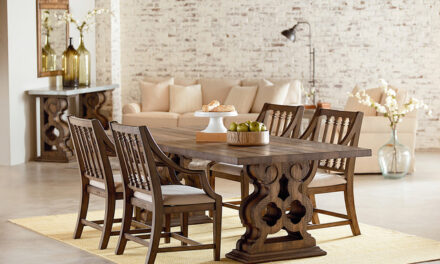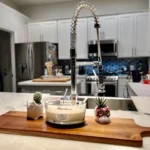Designing a tiny home kitchen design requires creativity, precision, and a thoughtful approach to make the most out of every square inch. In tiny homes, where space is at a premium, the kitchen must be as functional as it is aesthetically pleasing. The challenge lies in crafting a kitchen that combines practicality with style, maximizing storage and functionality without compromising on comfort or beauty.
Unique design elements, such as compact appliances, innovative storage solutions, and multi-functional features, can transform a small kitchen into a fully operational culinary space. From fold-down countertops to clever cabinetry that makes use of vertical space, every detail must be carefully planned. This approach encourages minimalism, ensuring that each piece serves a purpose while keeping the design streamlined and clutter-free.
Incorporating natural light, open shelving, and reflective surfaces can further enhance the feeling of openness in a tiny kitchen. Whether opting for a rustic, modern, or eclectic style, a well-designed tiny home kitchen should reflect the homeowner’s personal tastes while offering smart solutions that enhance everyday living. The result is a cozy yet efficient space that proves size doesn’t limit the potential for great design.
The Art of Downsizing: Stylish and Functional Tiny Home Kitchen design
This has led to a surge in innovative tiny kitchen designs that maximize functionality while still providing all the comforts of a full-sized kitchen.
Whether you’re designing a tiny home kitchen from scratch or remodeling an existing one, the key is to prioritize efficient layouts, multi-functional fixtures, and creative storage solutions. In this comprehensive guide, we’ll explore every aspect of tiny home kitchen design, from layout and materials to smart storage options and appliance choices.For more information visit here
Table of Contents
The Importance of a Well-Designed Tiny Kitchen
In any tiny home kitchen design is often the heart of the living space, and this is especially true in tiny homes, where the kitchen typically serves as a multi-purpose area. A well-designed kitchen in a tiny home can enhance the overall living experience by offering practical cooking spaces, social hubs, and even areas for storage or utility purposes.
Benefits of a Thoughtful Tiny Kitchen Design
- Efficient Use of Space: Every inch of the kitchen is used effectively, leaving room for living and dining areas.
- Simplified Lifestyle: Downsizing to a smaller kitchen encourages a more minimalist approach to cooking and meal prep, reducing clutter.
- Customization: Tiny home kitchens offer opportunities for personalized design and unique elements that suit your lifestyle.
- Energy Efficiency: Compact appliances and smaller spaces typically require less energy to operate.
The Core Principles of Tiny Home Kitchen Design
Before diving into specific design choices, it’s important to understand the core principles behind tiny home kitchen design. These principles will guide you as you begin planning your space.
Prioritize Functionality
Functionality is the foundation of any successful tiny home kitchen design. Unlike traditional kitchens, which may have the luxury of extra space for décor or non-essential items, tiny home kitchens must prioritize function over form. Everything should serve a purpose and contribute to the overall efficiency of the space.
Maximize Vertical Space
One of the best ways to save space in a tiny kitchen is by using vertical space. Wall-mounted cabinets, shelving units, hanging racks, and even magnetic strips for utensils can keep countertops clear and provide much-needed storage.
Incorporate Multi-functional Elements
In a tiny home kitchen design, each item should have more than one function. For example, an island could serve as a prep area, dining space, and extra storage. Similarly, fold-down tables and countertops can be tucked away when not in use, freeing up more space for other activities.
Embrace Minimalism
Clutter can quickly overwhelm a small kitchen. Therefore, a minimalist approach to décor, appliances, and even kitchen gadgets is key. Prioritize only what you need, and ensure that each item has a designated place.
Designing the Layout
The layout of your kitchen will depend on the overall floor plan of your tiny home. While the space may be small, there are several popular layout options to choose from, each with its own advantages.
Galley Kitchens
A galley tiny home kitchen design is a narrow kitchen design where two parallel countertops face each other. This layout is ideal for maximizing space in a narrow tiny home. The compact design makes it easy to move between workstations, and the countertops offer ample prep space.
L-Shaped Kitchens
An L-shaped layout utilizes two walls to form a corner kitchen. This design allows for efficient workflow and the possibility of integrating additional seating or counter space. It’s particularly useful in tiny homes with open floor plans, as it creates a seamless transition between the kitchen and living areas.
U-Shaped Kitchens
In a U-shaped tiny home kitchen design, countertops wrap around three walls, creating a highly functional workspace. This layout provides ample counter and storage space but may feel a bit more enclosed. It works best in tiny homes with slightly larger kitchen areas or where maximizing cabinetry is a priority.
Single Wall Kitchens
In a single wall kitchen, all the appliances and counters are placed along one wall. This layout saves space and keeps everything easily accessible. It’s perfect for tiny homes where the kitchen must be compact, but it may require careful organization to ensure there’s enough storage.
Choosing the Right Appliances
One of the challenges of tiny home kitchen design is finding appliances that fit within the space constraints but still offer the functionality needed for daily use. Fortunately, many manufacturers offer compact and multi-functional appliances that are perfect for tiny homes.
Compact Refrigerators
Standard refrigerators are often too large for a tiny home kitchen. Instead, opt for a compact or under-counter refrigerator. These smaller units still provide ample storage for perishables and can even include freezer compartments. Some homeowners opt for mini-fridges paired with a separate chest freezer, which can be stored under counters or in other spaces.
Two-Burner Stovetops
In a tiny home kitchen design, a full-sized range may be overkill. A two-burner stove or cooktop is often sufficient for cooking in small spaces. You can choose from electric, gas, or induction options based on your energy preferences and availability.
Combination Oven and Microwave
Instead of having a separate oven and microwave, consider investing in a combination appliance that serves both functions. These units can be installed over the stove or under counters, saving space and providing versatile cooking options.
Dishwasher Drawers
While many tiny home kitchen design opt to forgo dishwashers altogether, those who want one can consider a compact or drawer-style dishwasher. These units take up less space than traditional models and can be installed under countertops or in smaller cabinetry.
All-in-One Washer and Dryer
For tiny homes with limited space, an all-in-one washer and dryer unit can be a lifesaver. These compact machines combine the washing and drying process into a single unit, reducing the need for separate laundry appliances.
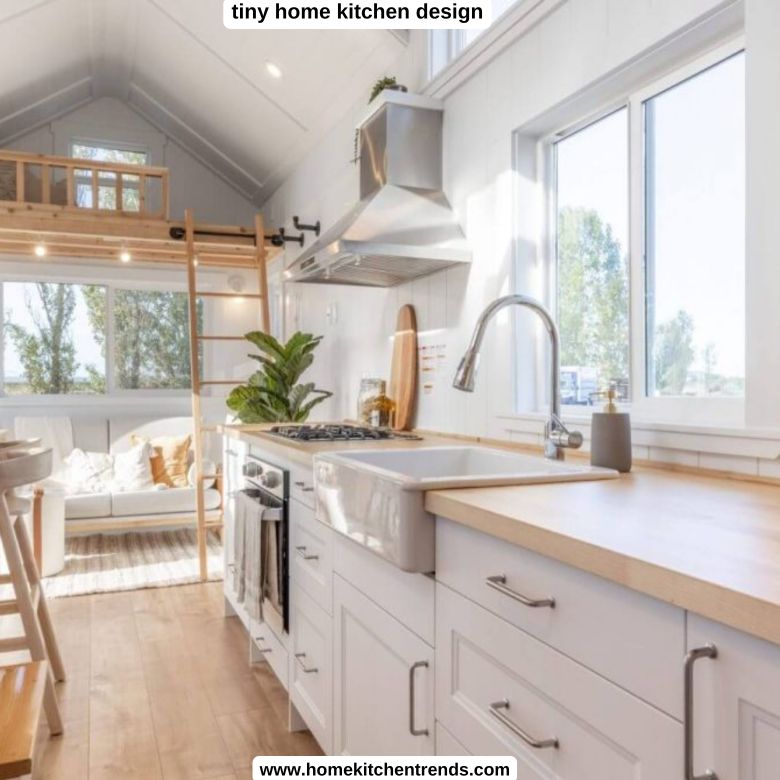
Innovative Storage Solutions
Storage is one of the biggest challenges in tiny home kitchen design, but with creativity, you can maximize the available space. The goal is to create storage solutions that are both efficient and visually appealing.
Pull-Out Cabinets
Pull-out cabinets are a fantastic way to make use of deep or narrow spaces. These cabinets slide out like drawers, allowing you to access items that would otherwise be hard to reach. They’re perfect for storing pots, pans, and other tiny home kitchen design essentials.
Under-Counter Storage
The space beneath countertops can be used for everything from shelving to pull-out baskets or bins. This area is ideal for storing smaller appliances, utensils, or pantry items.
Vertical Storage
Take advantage of vertical storage by installing wall-mounted shelves, magnetic strips for knives, or pegboards for utensils. You can also use hanging baskets or hooks to store items like mugs, cutting boards, or cooking tools.
Custom Cabinetry
Custom cabinets designed specifically for your tiny home kitchen design dimensions can make a significant difference in maximizing space. Opt for cabinetry that goes all the way to the ceiling and integrates hidden storage compartments, pull-out shelves, or lazy Susans to make the most of hard-to-reach areas.
Folding Furniture
Consider fold-down tables, countertops, or cutting boards that can be tucked away when not in use. This type of multi-functional furniture is a game-changer for small kitchens, creating extra prep space or seating as needed.
Material Choices for Tiny Kitchens
Material choice is crucial in tiny home kitchen design because it affects both functionality and aesthetics. You want to select durable, easy-to-clean materials that will stand up to the demands of cooking in a small space, but you also want materials that reflect your style.
Countertop Materials
- Quartz: Durable, non-porous, and low maintenance, quartz countertops are an excellent choice for tiny home kitchens. They come in a variety of colors and patterns, allowing you to customize the look of your kitchen.
- Butcher Block: For a more natural, rustic feel, butcher block countertops are warm and versatile. They’re also ideal for use as a prep surface, though they do require regular sealing and maintenance to prevent water damage.
- Stainless Steel: Sleek and modern, stainless steel countertops are durable and easy to clean. They’re particularly useful in kitchens where cleanliness and functionality are top priorities.
Backsplashes
Backsplashes are not only practical but also an opportunity to add a decorative touch to your tiny home kitchen design. Subway tiles, mosaic designs, or even metal or wood backsplashes can add character and protect the walls from cooking splatters.
Flooring
For flooring, choose durable materials that can withstand heavy foot traffic and kitchen spills. Vinyl, cork, and laminate are popular choices for tiny kitchens, as they are easy to clean and maintain. Cork flooring also offers the benefit of being eco-friendly and soft underfoot, making it a comfortable option for long periods of standing.
Lighting and Ventilation
In a small space, lighting plays a crucial role in making the kitchen feel open and inviting. Proper ventilation is equally important to ensure that cooking odors don’t linger in the small space.
Natural Light
Where possible, maximize natural light by incorporating windows, skylights, or glass doors. Natural light not only makes the space feel larger but also enhances the overall ambiance of the kitchen.
Task Lighting
Since tiny home kitchen design are multi-functional spaces, task lighting is essential. Under-cabinet lighting, pendant lights, or adjustable track lighting can brighten up workspaces and improve visibility while cooking.
Ventilation
A proper ventilation system, such as a range hood or vent fan, is essential for removing smoke, steam, and odors from your tiny kitchen. Compact, low-profile hoods are available for tiny home kitchens, and some homeowners choose to install retractable or hidden vent systems to save space.
Aesthetic Considerations
While function is key in tiny home kitchen design, don’t overlook the importance of creating a space that reflects your personal style. Whether you prefer a sleek, modern look or a cozy, rustic vibe, there are ways to add personality to your kitchen without sacrificing practicality.
Color Schemes
Light, neutral colors can make a tiny kitchen feel larger and more open. White, soft grays, and pastel tones work well in small spaces, but don’t be afraid to add pops of color through accessories, backsplash tiles, or painted cabinets.
Decorative Elements
Minimalist décor, such as small potted plants, simple artwork, or elegant dishware, can add character to the tiny home kitchen design without overwhelming the space. The key is to keep decorations to a minimum and ensure that each piece adds to the overall design.
Open Shelving
Open shelving not only provides additional storage but also creates an opportunity to display stylish kitchen items. Consider using open shelves for frequently used items like plates, glasses, or cookbooks, but be mindful of keeping them organized to avoid visual clutter.
Maximizing Multi-Functional Spaces in Tiny Home Kitchens
In tiny home kitchen design, spaces often serve multiple purposes, and the kitchen is no exception. Consider these ideas for integrating multi-functional elements into your kitchen design:
Kitchen Islands with Storage and Seating
A kitchen island can serve as a prep area, dining table, and storage space all in one. Choose an island with built-in shelving or drawers to maximize storage, and consider adding stools so it can double as a dining area.
Convertible Furniture
Folding tables, pull-out counters, or extendable surfaces are perfect for tiny kitchens where space is limited. These convertible pieces can be used when needed and folded away to free up space for other activities.
Combined Kitchen and Laundry Space
In some tiny homes, the kitchen also functions as a laundry area. Installing an all-in-one washer/dryer unit under the counter or in a hidden cabinet can save space while keeping laundry close at hand.
Customization: Personalizing Your Tiny Home Kitchen
One of the advantages of designing a tiny home kitchen design is the ability to customize the space to fit your unique needs and preferences. Whether you’re a passionate cook, an avid entertainer, or someone who values simplicity, your tiny kitchen can be tailored to reflect your lifestyle.
Tailor the Layout to Your Cooking Style
If you enjoy cooking elaborate meals, prioritize counter space and invest in a well-organized pantry system. For those who prefer quick and simple meals, a streamlined kitchen with fewer appliances might be the best fit. Consider incorporating elements like a pull-out pantry or built-in spice racks to create a kitchen that complements your cooking habits.
Personalize with Finishes and Colors
While tiny home kitchen design often lean toward neutral palettes to create a sense of openness, don’t hesitate to incorporate your personal style through bold finishes, backsplash tiles, or colorful cabinetry. Adding a touch of personality through design choices can make your tiny kitchen feel like home.
Incorporate Personal Touches
Whether it’s vintage cookware, handmade ceramics, or a unique backsplash design, personal touches can add warmth and character to a tiny home kitchen. Use open shelving to display items that are both functional and meaningful, creating a space that feels personal and inviting.
The Role of Outdoor Cooking Spaces
Many tiny homeowners extend their living spaces by creating outdoor areas for cooking and dining. If your tiny home kitchen design is stationary or located in a climate that allows for outdoor living, an outdoor kitchen or grilling area can help reduce the strain on your indoor kitchen and provide a refreshing way to enjoy meals.
Portable Grills and Stovetops
Consider using a portable grill, stovetop, or pizza oven outside. These can be easily stored when not in use and provide additional cooking space for larger meals or gatherings.
Outdoor Dining Areas
A simple patio table or fold-down outdoor seating can create a pleasant dining space. Combining indoor and outdoor cooking areas not only expands your kitchen but also encourages outdoor living, which is a natural complement to the tiny home lifestyle.
Final Thoughts
Designing a stylish and functional kitchen for a tiny home kitchen design requires careful planning, creativity, and a willingness to embrace minimalism. By focusing on smart layouts, multi-functional furniture, compact appliances, and innovative storage solutions, you can create a kitchen that offers both practicality and beauty.
Tiny home kitchens challenge traditional ideas of what a kitchen should look like, encouraging a more thoughtful approach to design. Ultimately, a well-designed tiny home kitchen becomes a reflection of your lifestyle, proving that great things can come in small packages.
With the right design choices, your tiny kitchen can be a space where cooking, gathering, and living happen seamlessly—proving that downsizing doesn’t mean downgrading. Instead, it’s an opportunity to create a functional and stylish kitchen that meets all your needs in a compact, efficient space.

